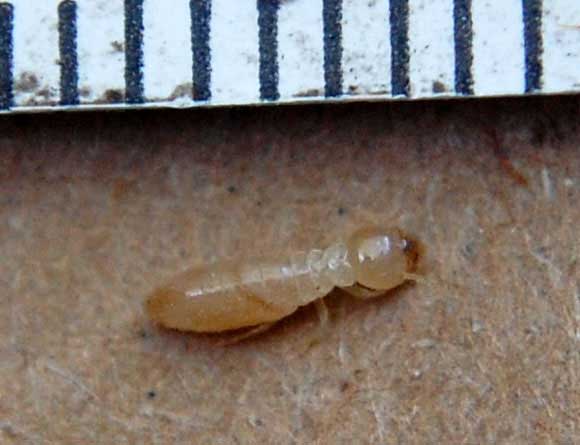Desert Subterranean Termite
Heterotermes aureus

The head and mandibles of this termite are highly chitinized (tough exoskeleton protein) for crunching wood into digestible particles. This is a worker caste and was retrieved from a tunnel on exterior of a concrete foundation in Phoenix, Arizona, USA. The ruler is marked in millimeters.
Rhinotermitidae -- Subterranean Termite Family
The extensive colonies of subterranean termites are located beneath the soil - this is where the queens remain and all egg laying and reproduction takes place. As workers forage away from the colony they maintain sealed tunnels through soil and over obstructions. The mud-like shelter tunnels are a common and distressing site around wooden structures throughout the urban habitats of the Sonoran Desert. They are also sometimes seen hanging from ceilings where the termites are seeking alternate routes to the soil. There are other very similar species of subterranean termites in addition to this one.
Termite colonies contain four main castes. The worker is shown at left. The greatly enlarged queens are rarely seen and inhabit the deep recesses of the colony. The winged swarmers, or alates, emerge on warm, humid nights during the summer and are the reproductives that can establish new colonies. Finally there is a soldier cast with greatly enlarged head capsule and long, sharp, almost straight mandibles that help protect the colony from raiders, particularly ants.
More Information:
- Termite.com <- reliable info.
- Wikipedia
- Google Images
- Google Scholar Literature Search